I photographed the solar eclipse with iPhone 15 Pro vs Galaxy S24 Ultra vs Pixel 8 Pro vs OnePlus 12 — here's the winner

The solar eclipse has come and gone, and what an opportunity it was to see the rare natural phenomena. Much like everyone else located within the narrow path of totality, I was excited for the opportunity to photograph the solar eclipse with my smartphone. Having put many of the best phones through an astrophotography face-off last fall, I thought the solar eclipse would be the perfect time to put the newer phones to the test.
This meant taking the Apple iPhone 15 Pro, Samsung Galaxy S24 Ultra, Google Pixel 8 Pro, and OnePlus 12 with me for a proper solar eclipse flagship phone shootout to see which one is best for the occasion — and which comes out on top for delivering the best results. I’ve pitted many of them against each other, but I’ve never directly compared how well they capture the sun.
Even though I wasn’t in that sweet spot of seeing 100% totality with the solar eclipse, the forecast for me was still a modest 88% to 90% — more than enough to darken my backyard. In doing this camera shootout, I did learn a couple of things about how best to capture the solar eclipse.
First of all, I used a proper solar filter that I carefully held tightly against their cameras. Secondly, I learned that the best results were from using their respective manual modes, rather than sticking to automatic. There are some quirks and nuances about each one that I’ll explain below, like having to constantly disable them from their respective macro and night modes. Overall, though, I’d say almost every one of them did very well to capture the different stages of the solar eclipse.
Apple iPhone 15 Pro









Despite having a shorter zoom lens than its sibling, the iPhone 15 Pro is every bit a contender in our best camera phones guide. Its main 48MP camera in particular did nicely to capture the sliver of sunlight peeking through the clouds when it was at 80% totality from my estimation, but it was sorely lacking everywhere else.
What I did find most problematic shooting the eclipse with the iPhone 15 Pro is that it lacks a manual mode — resulting in longer exposures nearly every time. Even when I kept it still with a tripod and phone holder, the iPhone 15 Pro didn’t get me any better results. In fact, the solar eclipse shots with its 12MP 3x zoom camera became noisy and filled with artifacting effects. In nearly every zoom shot, the iPhone 15 Pro was capturing them with a 1/15 shutter speed, resulting in the sun being more over-exposed than I’d like it to be.
Samsung Galaxy S24 Ultra











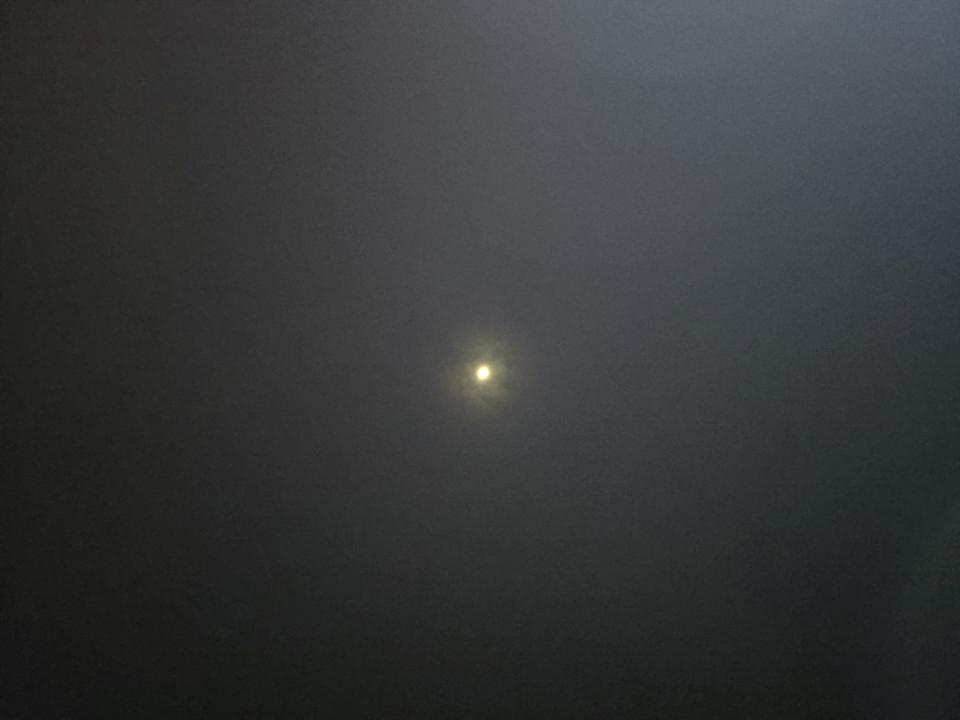
Impressively, the Galaxy S24 Ultra delivered some of the sharpest photos I captured of the solar eclipse. For most people, I think its automatic mode suffices, but I got even better results switching over to its Pro Mode. This allowed me to dial in the shutter speed and ISO level to my liking, resulting in the sharpest set of photos of the sun. Interestingly enough, Pro Mode limits the zoom of its telephoto camera to 20x, which I think holds up nicely against the stuff I captured at 100x zoom on automatic.
That’s because I can’t genuinely believe it’s pulling in details that the other cameras are simply not getting, like the single sunspot near the middle of the sun. I find it tough to believe that its 50MP 5x optical zoom camera and sensor can draw out that detail, so I suspect there’s a bit of help going on in the background. I will also admit it’s extremely tough locking onto the sun at 100x zoom, so I’d suggest using a tripod to keep it steady.
Google Pixel 8 Pro


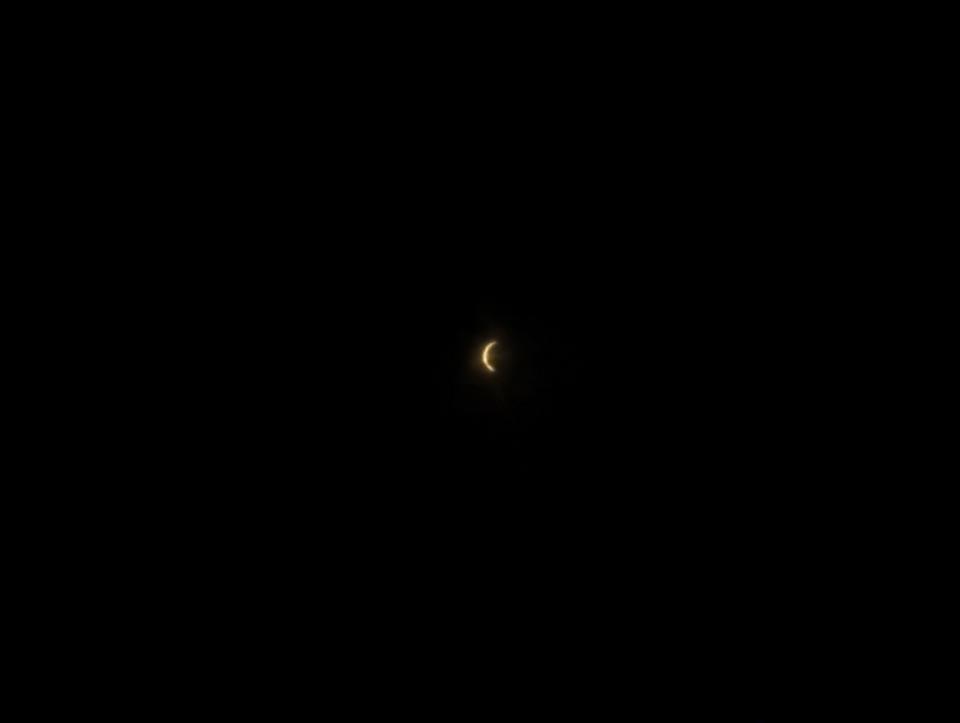







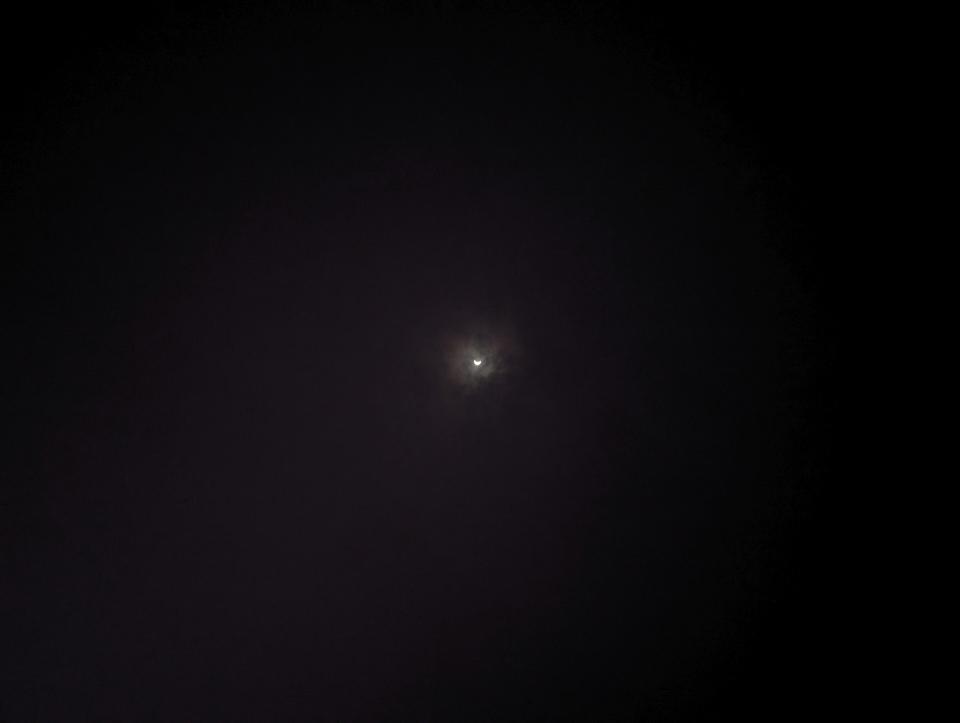


My favorite camera phone, the Pixel 8 Pro, did a surprisingly good job in this shoot-out — definitely better than the iPhone 15 Pro, but not enough to overcome the Galaxy S24 Ultra. On the one hand, its manual controls came in handy to tweak the shutter speed just enough for me to keep the ISO level relatively low. That way, it didn’t suffer from the same heavy artifacting that plagued the iPhone 15 Pro.
The only strange thing about using the manual controls on the Pixel 8 Pro was that sometimes the exposure of the scene through the display appeared brighter than what actually came out. Therefore, I had to compensate for this by shooting at a lower shutter speed, but at least the stabilization kept things steady. One of my favorite shots from the solar eclipse was when the clouds covered the sun for a period of time, with the silhouette of a plane passing nearby.
OnePlus 12
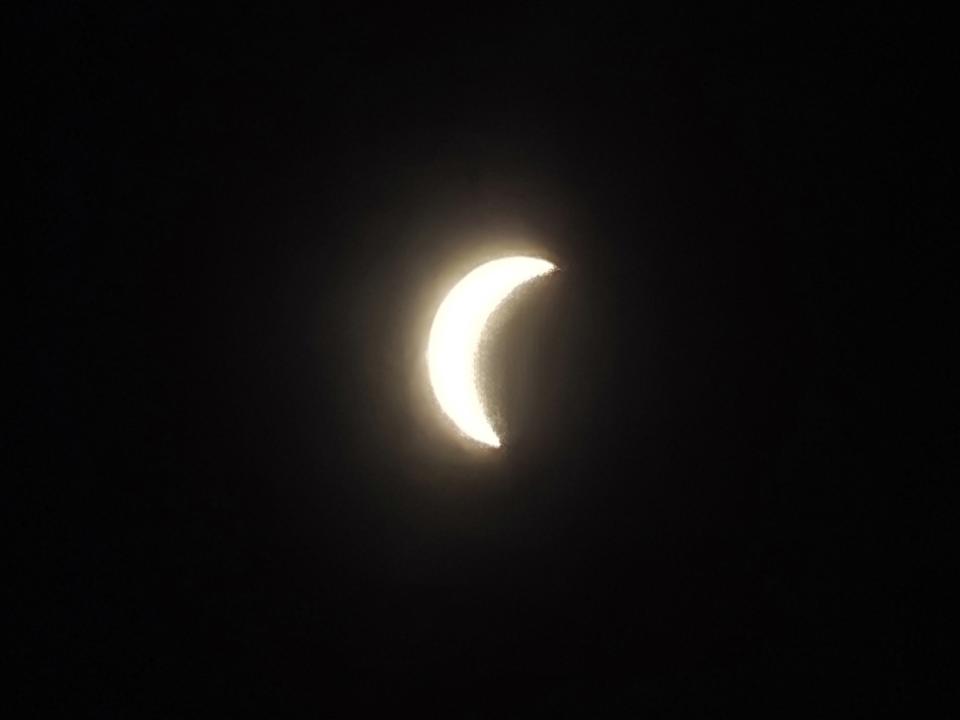

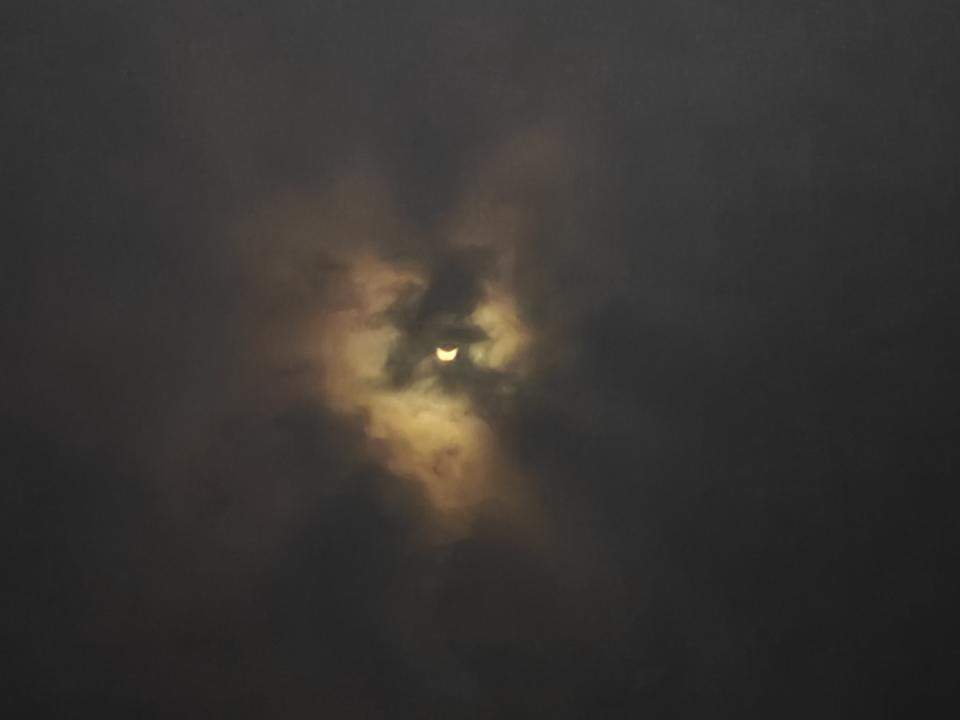


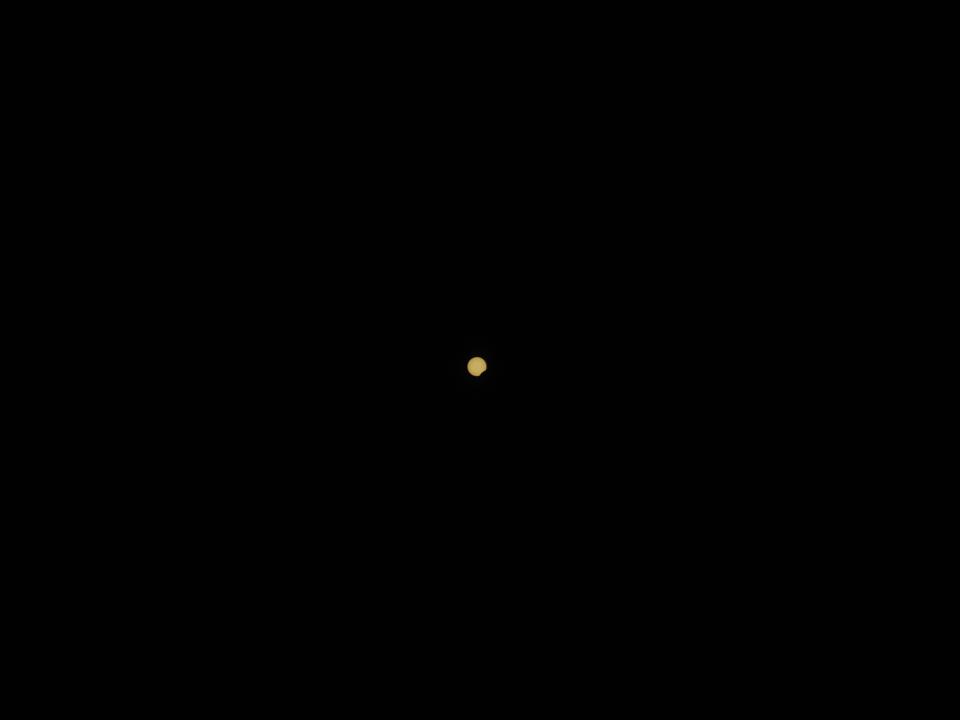
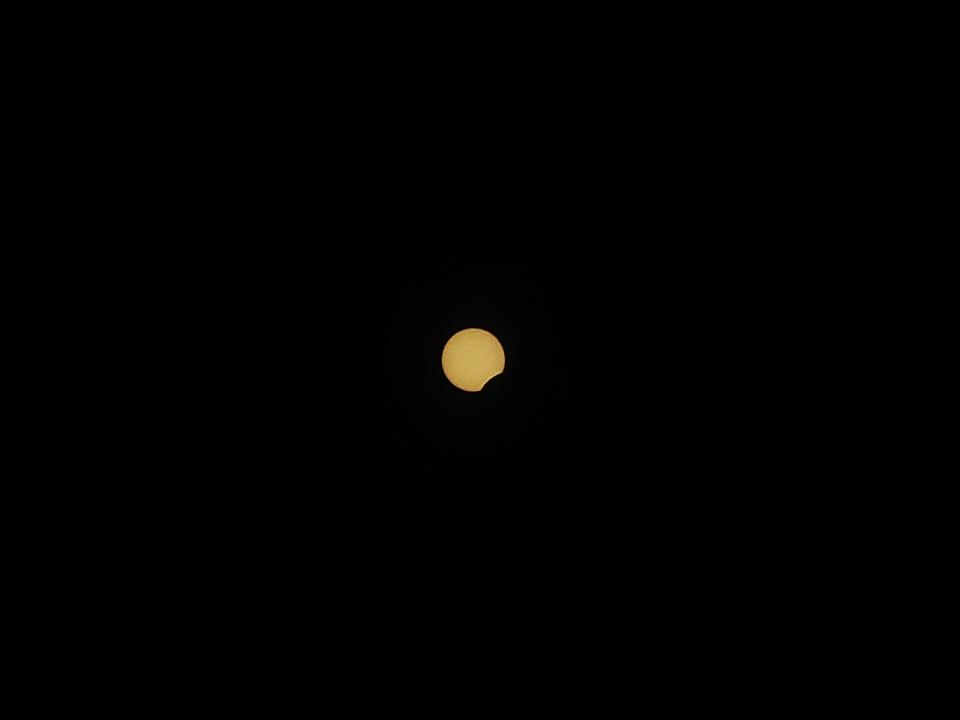




And finally, there’s the OnePlus 12. I’ll admit I was most surprised by this underdog because it’s a perfect example of how manual controls make all the difference with shooting the solar eclipse. I also want to point out that much like the iPhone 15 Pro, its telephoto camera features 3x optical zoom, but it produced much better results because of those manual controls.
Through its main 50MP camera, the eclipse looks almost like a tiny pinhole in the shot — but switching to its 64MP telephoto camera at 6x zoom fills the frame nicely. In some of the photos with the sun slightly overexposed, they’re the result from capturing them in automatic. In contrast, the more toned down images come from using manual controls. And similar to the S24 Ultra, I was able to get extremely close shots of the eclipse — complete with a fuzzier looking sunspot than what I got with Samsung’s flagship. Technically, I can get up to 120x zoom on automatic, but it was nearly impossible to get the eclipse centered without a tripod.
Samsung Galaxy S23 Ultra













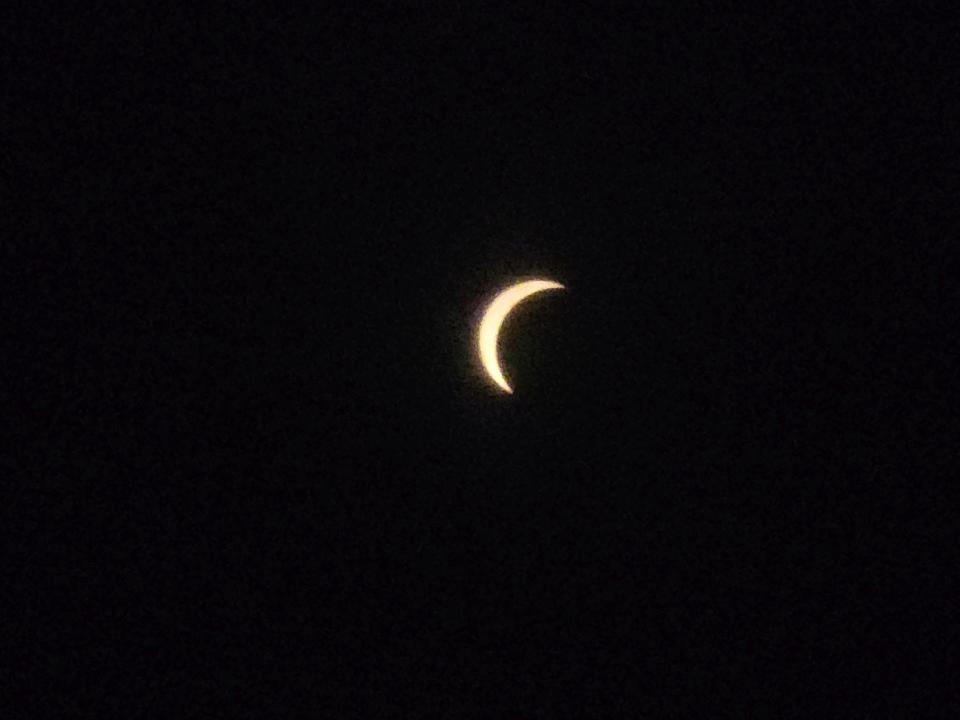


Before I end this solar eclipse shoot-out, I want to share additional photos I captured with the Galaxy S23 Ultra. Why include last year’s flagship phone? Well, it’s because of its longer telephoto reach — a 10MP telephoto camera with 10x optical zoom. While it certainly has a much longer reach than all the previous phones, I wouldn’t say it makes a huge difference.
Manual controls undoubtedly help, but I had to increase the ISO level when the sun appeared as a crescent — resulting in noise being introduced into the shot. It’s usable, but I’d say that the S24 Ultra’s shots were better.
Flagship phone solar eclipse face-off: verdict
After looking through all the photos and taking into account my experience of using them specifically for this occasion, I’m inclined to give this one to the Galaxy S24 Ultra. It’s clearly processing the images at longer zoom ranges better than the rest, which helps to maintain the details without introducing a lot of the artifacting and noise I see in the other phones.
